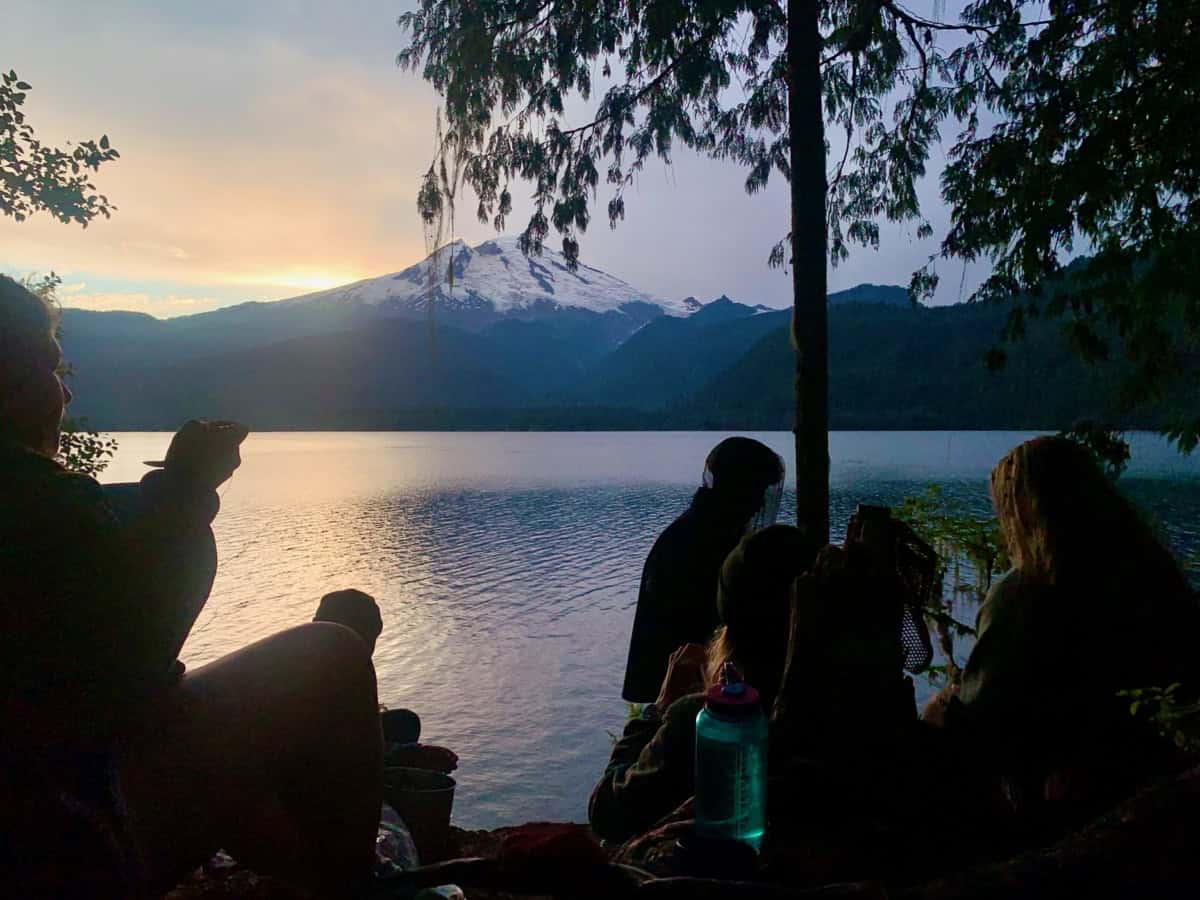
Creating Community Beyond Language
Guest post by Kaylin Lilly, 2024 YLA Instructor
After having an extremely impactful season last year, I was eager to come back to Youth Leadership Adventures as a field instructor. My deep eagerness sprouted from the heartfelt communities I saw form last year, even when people didn’t speak the same language. I was excited to practice and hear Spanish again, as well as watch students connect in a way that I wish the wider world would be more willing to do.

In August, the last trip of the season started and our students were either English-only or Spanish-only speakers. As exciting as that is, it’s also more difficult for the students. There’s more hesitation, increased uncertainty, and tangible nerves because everyone is hopeful for connection. For us as instructors, we also hold tension because we want to make sure everyone feels at home and heard. Thankfully we are lucky enough to have a peer mentor, Teresa, who helped translate during the first half of our trip.
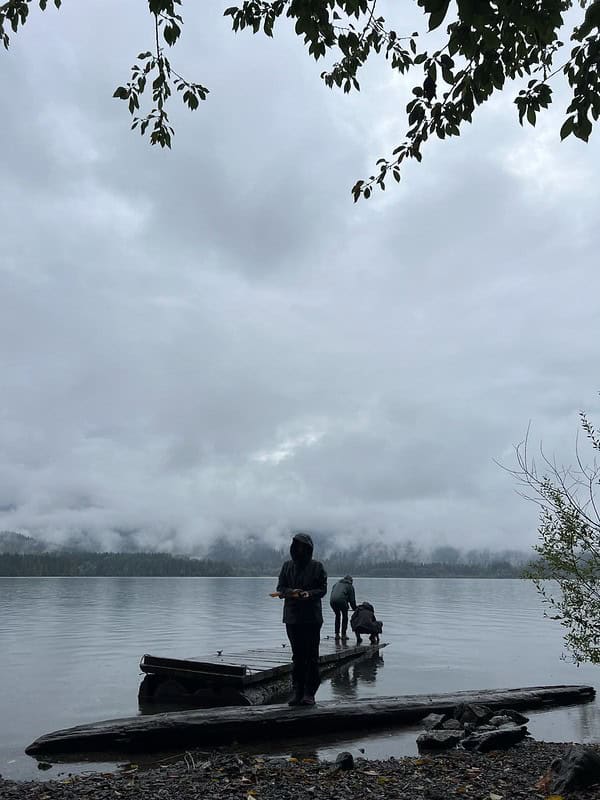 Our first night started with rain. Rain, rain and even more rain! This increased my anxiety. I held hope and high expectations, but was worried that students might not be able to connect fully because of the weather. Regardless, we trucked on and started our backpacking trip with heavy packs, mismatched hiking poles, and quiet amongst the student group. As we began walking, the silence exposed the sounds of the forest. The sound of 11 people’s feet hitting the dirt, of chickadees singing, and of the sound of gear swinging from the outside of packs.
Our first night started with rain. Rain, rain and even more rain! This increased my anxiety. I held hope and high expectations, but was worried that students might not be able to connect fully because of the weather. Regardless, we trucked on and started our backpacking trip with heavy packs, mismatched hiking poles, and quiet amongst the student group. As we began walking, the silence exposed the sounds of the forest. The sound of 11 people’s feet hitting the dirt, of chickadees singing, and of the sound of gear swinging from the outside of packs.
The trees seemed to grow out in front of us, welcoming students into a wet, happy and dense forest of sword ferns, cedars, and Douglas Firs. I felt as if the trees were watching us walk past with anticipatory feelings. The excitement the forest had for young people to be out in the backcountry. It was a feeling like the forest was ready to give us an experience that it knew our group is capable of.
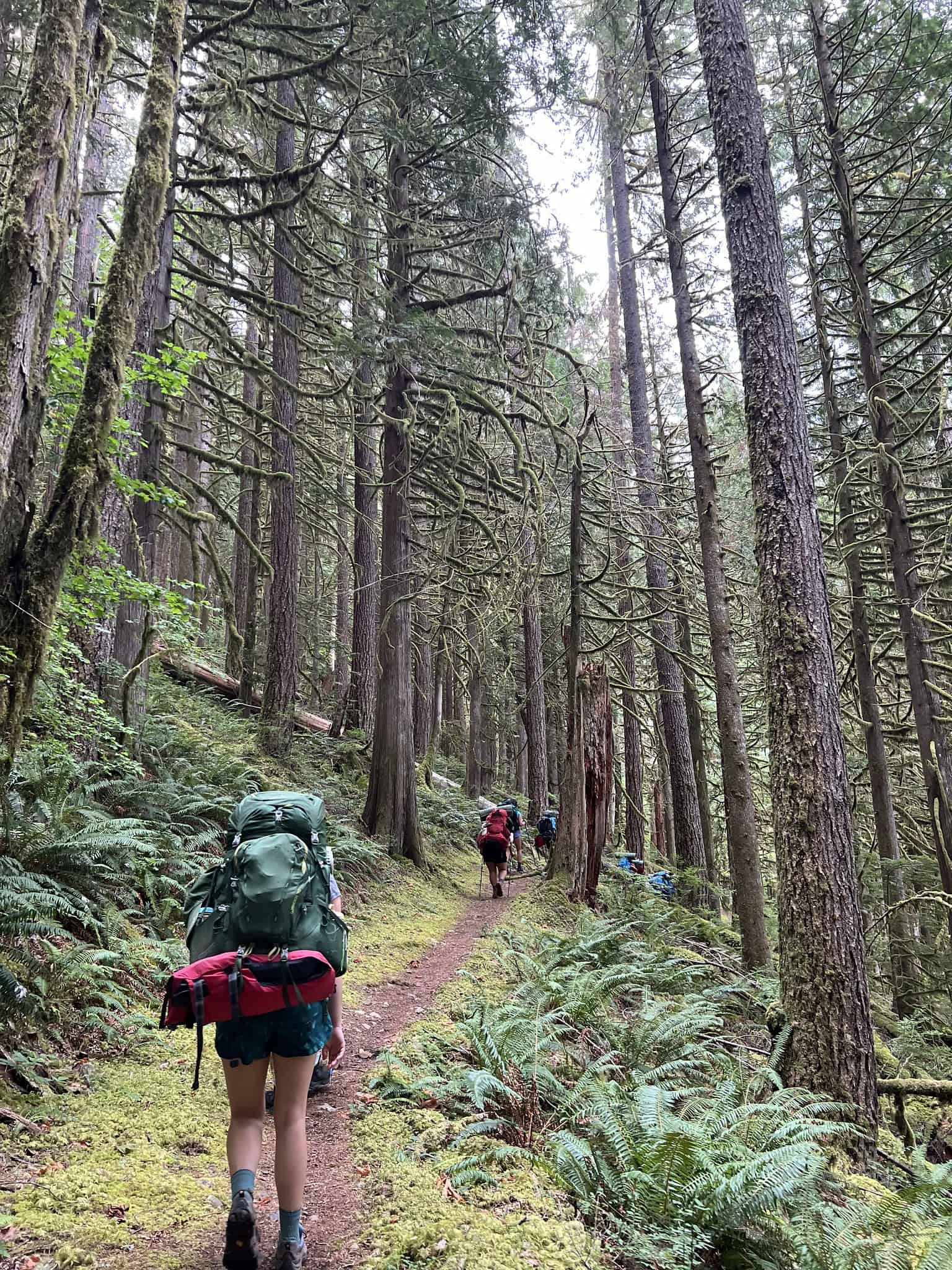
Even though the students weren’t talking yet, you could see connections beginning to form. We already had begun a shared experience together in a special place. Ordinarily, because of cultural and social backgrounds, these groups wouldn’t typically be together. And here we all were, together in the wet, enchanted forest.
Soon groups formed, clusters of students that spoke one language and another that spoke the other.
“Hmmmm…” Tes (my costaff) and I brainstormed, “How can we merge these groups together more? What can we do together that doesn’t require language as a connector?”
Automatically our thoughts shifted to, “Well, games!”
We corralled our students together with our proficient English and mediocre Spanish, and sat them down together at a table. We translated the instructions of spoons and BS to our students and sat back and watched.
All of a sudden language didn’t matter.
There is maybe one word that mattered, but even then it’s all about body language, maybe a Yes! Or a Si! Or a NOOOO! Ultimately, students bonded together, they sat bunched together on a small picnic table, laughter ringing throughout the forest for a few hours.
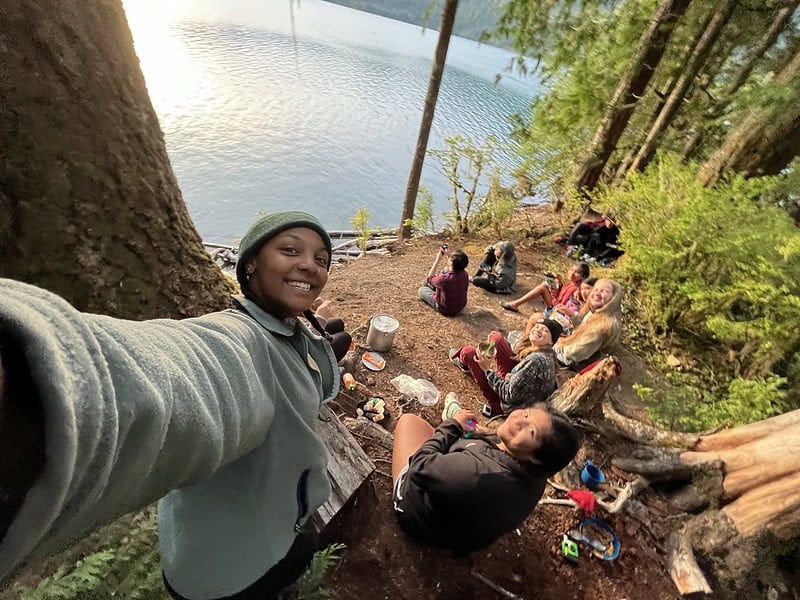
Later on, days were filled with more eagerness for games. Games were their connecting point. Students began asking how to say certain things in Spanish or in English so they could communicate more. One student started to memorize the phrase “¿Quieres jugar cartas después de la cena?” and the answer every time was “Claro que si.” Other Spanish speaking students started asking “¿Como se dice, la basura en ingles?”
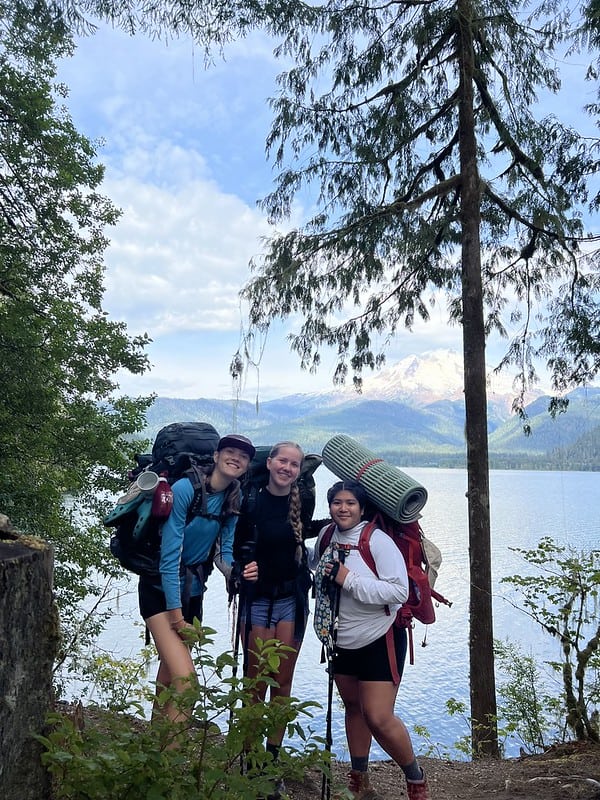
Even when there weren’t words to memorize or to share, just these simple questions showed how it didn’t matter how different the groups were. We were just a group of humans, together, alone in the forest, learning how to communicate with each other. Most of the time, there’s laughter in mistakes and confused facial expressions when a person would speak in a different language. But does that even matter? What matters to me is that someone is making the effort to say something in someone else’s language. That to me is a powerful way of communicating to someone that you care about them.
I learned that connection already exists in a group if you’re in a shared space with people. You just have to make an effort to truly share that space with people. I learned from these students that you don’t have to share a culture, a language, or background to care or connect with others seemingly so different from you.

Calling all local high school students interested in youth-led climate action projects! Youth for the Environment and People (YEP!) is an opportunity for students to come together to share ideas and passions, learn about climate change solutions, engage in local stewardship projects—and have fun while doing it! Meets on Mondays, Sept 30 – Dec 9 at 3 pm, and is offered in partnership of RE Sources and North Cascades Institute. Learn more at www.re-sources.org.


Thank you, Kaylin, for coming back this year and for all you do for our young people!